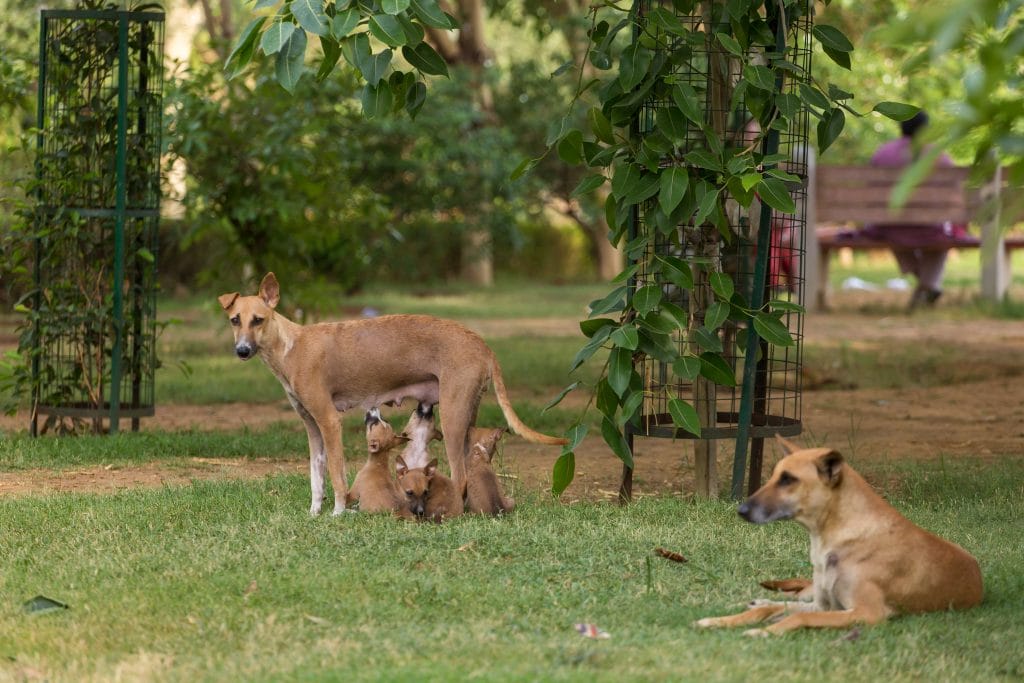
In 2017, a disease killed everybody it infected in India. The disease in question also happens to be 100 percent vaccine preventable.
Such is the strange dichotomy of rabies. Its relative rarity compared to diseases such as malaria mean it often goes unreported in the Indian media. This does not make it any less deadly. Since 2010, only six people have survived infection with rabies in India.
Its 100 percent death toll in 2017 speaks volumes. By comparison, mortality rates for Japanese encephalitis and swine flu were twelve and six percent respectively. Of the myriad of rare diseases in India feared for their lethal potential, no other disease was found to have a 100 percent risk of death.
However, rabies does not have to be a death sentence. A vaccine was created against rabies as far back as 1885, when French scientist Louis Pasteur created and tested his experimental vaccine in humans.
“In 2017, a disease killed everybody it infected in India. The disease in question also happens to be 100 percent vaccine preventable.“
Rabies is typically spread through the bite of an infected animal. In India, it is typically spread by rabid dogs. However, other species – such as bats – may also spread the disease.
In India the issue of wild dogs is seeing a large degree of media attention. Recent cases of conflict between humans and dogs have occurred in Punjab, Nagpur, Delhi and Uttar Pradesh. Many of these dogs have mauled children, and locals are striking back by killing the wild dogs in droves. Fears of the spread of rabies are abundant.
The rabies virus can be spread through both bites and scratches. This can make diagnosis difficult as a scratch may simply go unnoticed. The virus has a lengthy incubation period once a patient has been infected, further complicating diagnosis. The incubation period lasts between one and three months, though symptoms could become apparent within a week or non-existent for over a year.

“Fears of the spread of rabies are abundant”
The fact that the disease may remain without symptoms adds to its lethality, as an unvaccinated individual will require immediate treatment of the infected wound.
The standard treatment is a four shot course of anti-rabies vaccinations and rabies immunoglobulin. The first of these four shots must be applied immediately after the infected wound is washed. This presents a narrow timeframe for effective treatment.
Both anti-rabies vaccines and rabies immunoglobulin are produced domestically within India. Production capacity of the vaccine needs to be scaled up in order to combat procurement delays. This could be achieved through use of more modernised cell-culture techniques for production of the vaccine. Due to the short time frame in which treatment must be administered, any gaps in the supply chain could result in the deaths of those infected with the virus.
Both the vaccines and the immunoglobulin are available free of charge at government run hospitals. However, access to these hospitals is often limited, with those in rural locations often being geographically isolated from any government run facilities.
This results in many individuals being forced to seek treatment at private facilities. Each dose of vaccination can cost between Rs 350 to Rs 500 at private clinics, while the rabies immunoglobulin costs anywhere from Rs 650 to Rs 2,500. As a course of four doses is required, the price can rise quite substantially.

“The fact that the disease may remain without symptoms adds to its lethality, as an unvaccinated individual will require immediate treatment of the infected wound….Due to the short time frame in which treatment must be administered, any gaps in the supply chain could result in the deaths of those infected with the virus.”
Primary symptoms of a rabies infection can include fever, with a painful, tingling or burning sensation (paraesthesia) at the wound site. Following these initial symptoms the virus spreads quickly to the spinal cord and brain.
Secondary symptoms begin to occur once the virus reaches the brain. These symptoms are far more complex and can involve considerable changes to a person’s behaviour. These behavioural symptoms manifest in two clear forms.
The first, and most common at around seventy percent of cases is known as “furious rabies”. People displaying this form of the disease exhibit signs of hyperactivity, excitable behaviour, hydrophobia (fear of water) and sometimes aerophobia (fear of drafts or of fresh air). Death occurs after a few days due to cardio-respiratory arrest stemming from the hyperactivity.
The alternative is paralytic rabies. This accounts for about thirty percent of the total number of human cases. This form of rabies runs a less dramatic and occurs for a typically longer duration than the furious form. Muscles gradually become paralyzed, starting at the site of the bite or scratch. A coma slowly develops, and eventually death occurs.
“Muscles gradually become paralyzed, starting at the site of the bite or scratch. A coma slowly develops, and eventually death occurs.”
In 2016, 4,370 people in India lost their lives to rabies. A report published by the Global Burden of Disease Study estimates that this number accounts for a third of the world’s 13,340 rabies deaths.
Around 99 percent of cases in India were caused by dog bites or scratches. As such the vaccination of dogs against the disease has been suggested as a viable strategy by which to not only curb disease cases, but potentially eradicate it. India is home to around 25 million stray dogs, so such a strategy would likely be both costly and excruciatingly hard to implement.
Currently the best strategy to combat the disease is the use of vaccinations. If symptoms are already apparent, the disease has already set in and treatment is all but useless, therefore, prevention is vital.

